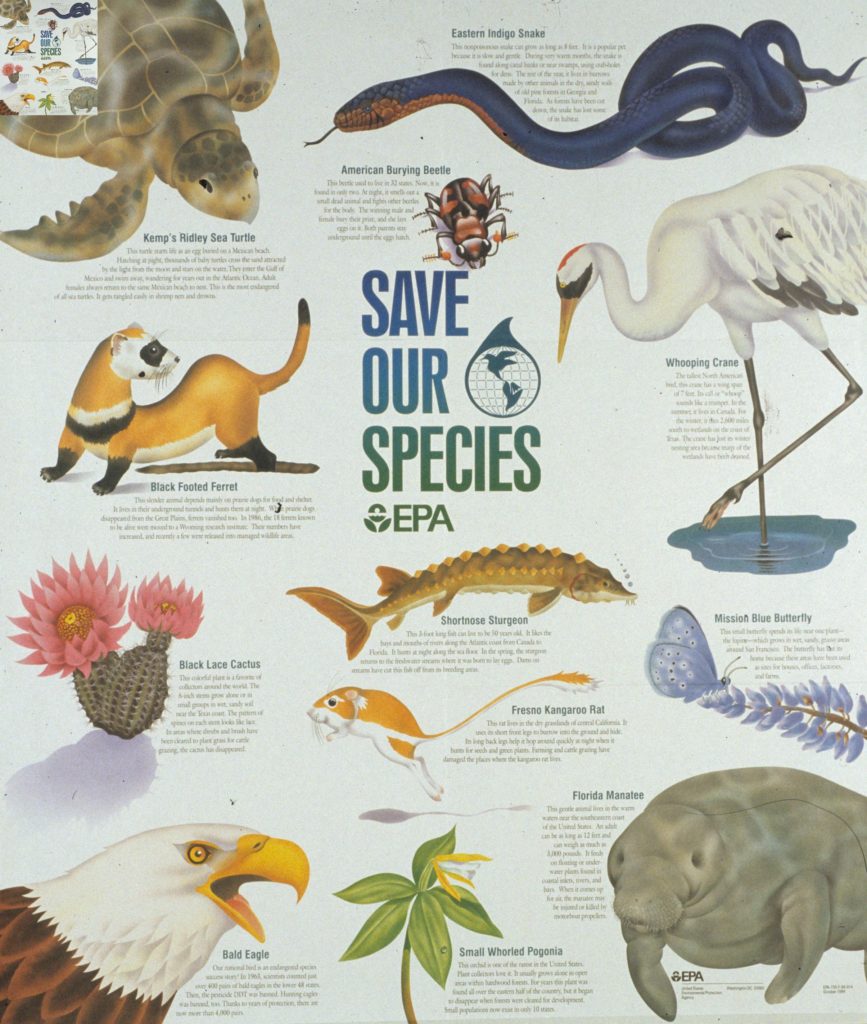All our environmental and conservational laws are important, but one that would make the playoffs for the super bowl of greatest laws would be the one enacted on this day in 1973. Two years after President Richard Nixon made his case to Congress for stronger protection of endangered species, he was able to sign into law the “Endangered Species Act of 1973.”
Protection of endangered species had begun much earlier. In 1940, a law was passed to protect Bald and Golden Eagles because the national symbol had declined to the brink of extinction in the continental U.S. A more general endangered species act took effect in 1966 and was strengthened in 1969. But the protections were still insufficient to curtail the decline of many species. President Nixon addressed Congress on February 8, 1972, stressing “that even the most recent act to protect endangered species … simply does not provide the kind of management tools needed to act early enough to save a vanishing species.” He asked congress for a stronger law. Then, in early 1973, an international conference in Washington, DC, established the Convention on International Trade in Endangered Species of Wild Fauna and Flora (CITES), a global commitment to protecting biodiversity (learn more about CITES here).

Congress listened to Nixon and responded to the CITES challenge in the summer of 1973. They drafted the law that put in place a broad mechanism for protecting endangered species. Despite several later amendments, the Endangered Species Act of 1973 (ESA) contained all the basic aspects of today’s law:
- Assigned responsibility for administering the ESA to the US Fish and Wildlife Service (for terrestrial and freshwater organisms) and the US Marine Fisheries Service (for marine and anadromous organisms)
- Defined the meaning of “endangered” and “threatened” and the mechanism for “listing” species
- Extended protection to plants as well as animals
- Added protection for “critical habitat”
- Defined “taking” of endangered species to include a broad set of actions well beyond actually killing individual plants or animals
- Required federal agencies to consult with the Fish and Wildlife Service or National Marine Fisheries Service before undertaking new projects that could harm listed species
- Implemented CITES for the United States
Unlike today, support for environmental laws was bi-partisan and broadly popular. The draft bill passed the Senate unanimously (92-0) and the House of Representatives by a 390-12 margin.
The Center for Biological Diversity calls the ESA “the strongest law for protecting biodiversity passed by any nation.” The list of protected species now includes about 1600 species. Although fewer than 100 species have been removed from the list over time (a fact often cited by critics of the law), 99% of listed species have avoided extinction and most are recovering substantially from their lows. The Bald Eagle, for example, has rebounded from a low of about 400 breeding pairs in the 1960s to over 7,000 today, and the national symbol has been de-listed.
And protection for endangered species remains wildly popular. The Center for Biological Diversity reports that in a 2013 poll, two-thirds of Americans wanted the ESA strengthened or kept the same. They also report that more recent polls show 90% of Americans want the ESA to remain strong.
References:
Ballotpedia. History of the Endangered Species Act. Available at: https://ballotpedia.org/History_of_the_Endangered_Species_Act. Accessed January 16, 2020.
Center for Biological Diversity. The Endangered Species Act: A Wild Success. Available at: https://www.biologicaldiversity.org/campaigns/esa_wild_success/. Accessed January 16, 2020.
US Fish and Wildlife Service. Endangered Species Act—A History of the Endangered Species Act of 1973. Available at: https://www.fws.gov/endangered/laws-policies/esa-history.html. Accessed January 16, 2020.
